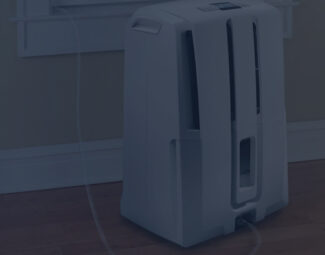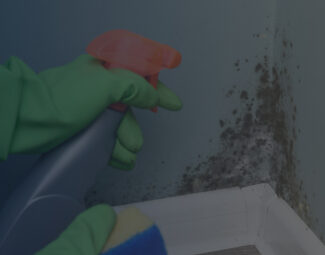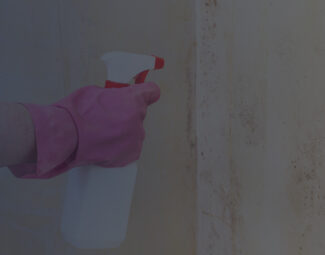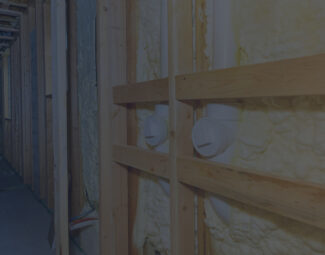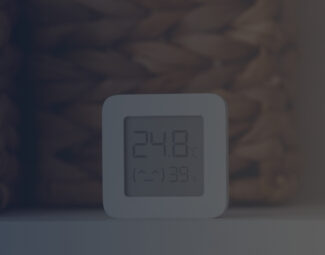H as condense appeared indoors and you want to solve the imminent high humidity issue before mold makes a guest appearance too? Are you considering investing in a dehumidifier but don’t know what to pick? Before you get entangled in all the features and options that come with these systems, what’s a priority is to understand how they function. Only then can you be confident when deciding which type complies best with your needs, so continue to read this piece to gain the insight you seek.
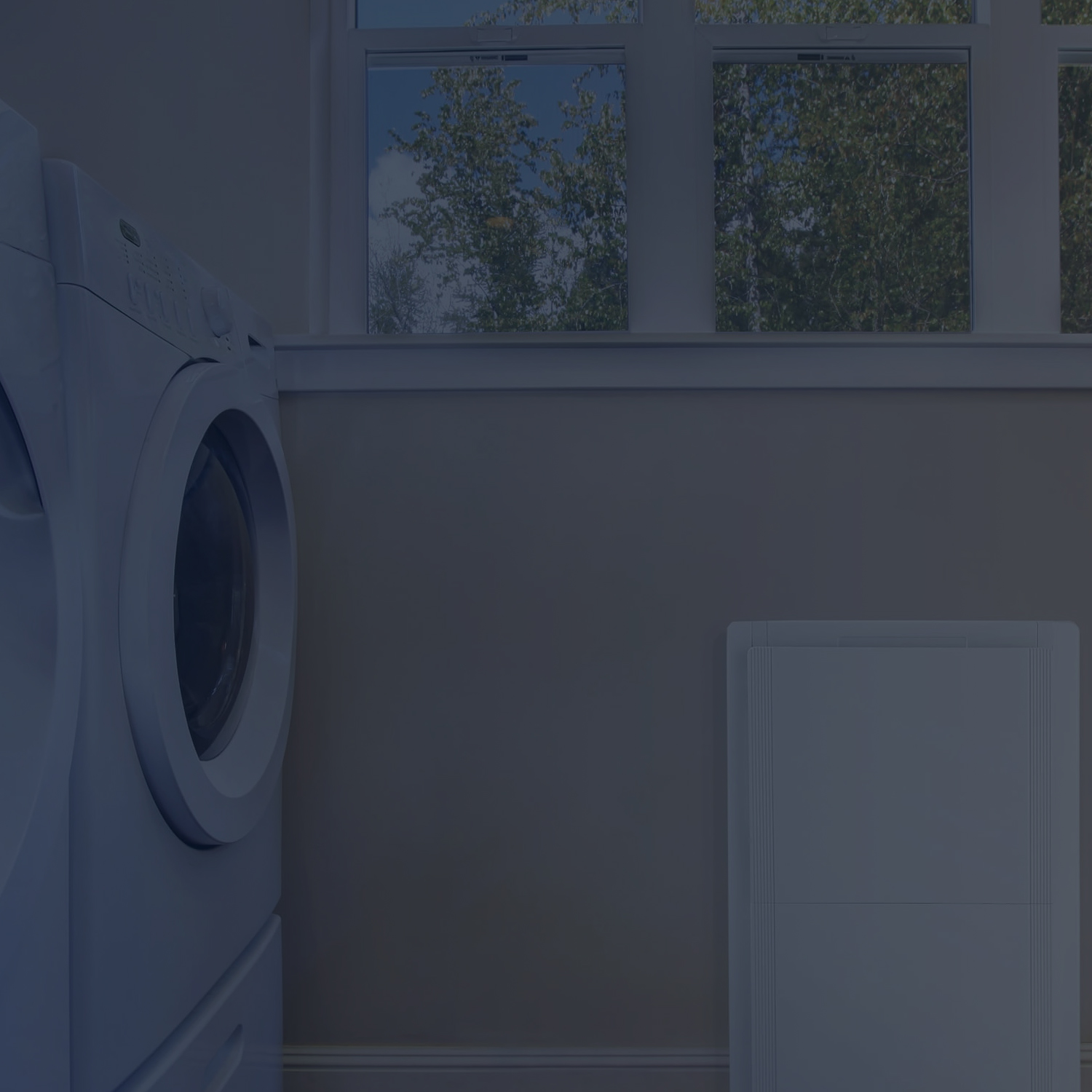
Dehumidifier in Laundry Room
What does a dehumidifier do, more exactly?
When sized properly for the space you intend to use it in, it removes excess moistness and humidity to protect you from the repercussions of mold growth, mildew, and dust mites. As wooden furniture durability and your home’s structural stability are linked to relative humidity level upkeep, there are multiple beneficial aspects to using a dehumidification system.
How does using a dehumidifier benefit you?
- Allergy relief: Allergens generally favor damp environments, the likes of mold, mildew, and dust mites thriving in moist conditions. Thus, if you want to reduce allergy and asthma attacks, a surefire way is by controlling indoor moisture with a dehumidifier as the aforementioned common triggering particles won’t form and linger in the air.
- Comfort enhancement: If you live in a muggy area, you are bound to feel the improvement in comfort while at home almost instantly as you won’t feel as hot and you won’t sweat as much either. Put it in the bedroom in case moistness is high in this room, and sleep quality will boost as you will fall asleep faster and won’t sweat during the night either.
- Lower energy costs: One of the main benefits provided is that of lower pay on the energy bill as it helps the air conditioner maintain a comfortable temperature in a more efficient manner, not having to put in as much work as before to make the room cool.
- No more pests: Moist spaces are magnets for roaches, spiders, and other pests, so you can see why this system would benefit you as your home won’t be as tempting for these critters anymore. Seeing how some of them are even disease carriers, it even helps protect your well-being.
How Do Dehumidifiers Work?
Q: What are the different types of dehumidifiers?
A: There are two system types according to their operation, more specifically desiccant and refrigerant models.
How Does a Condensate System Work?
The operation isn’t complicated in the slightest, even though it involves quite a few parts that play a role in the process. It draws in air from the room and passes it through a filter (this is the part where air pollutants are removed so that the air that comes out is cleaner and safer to inhale), after which it is drawn over cold coils that form condense when the warm air hits them. In turn, the condensation water drips into the collection basin so that it won’t be expelled back into the room.
Considerations:
They are generally classified as being better suited for higher temperature and moister environments, which makes them the common go-to for residential use. However, there are models that fare quite well in low temperatures, so they can be used to fix humidity in the basement, a part of the house that is generally colder and damper.
Benefits:
- It needs to be colder than the air in the room to work at its full potential, which makes the compressor dehumidifier the go-to for warm climates where temperatures are over 15°C or to 59°F.
- Generally Energy Star rated for their efficient power draw during use. This means that it doesn’t cost much to run these systems as long as needed to upkeep RH levels.
- Before releasing the air back into the room, the system reheats it to the prior temperature, which means that it helps maintain your preferred conditions (this comes especially in handy if you are using the space for storage of foods or beverages).
Downsides:
- Not all systems are tailored with automatic defrost and similar functions that would allow use in a low-temperature space, so you might not be able to place it wherever you want.
- Their fans tend to make quite a lot of noise during operation, so they are not suited for spaces where you need silence, like the office, for example.
- Not recommended if you need to use the system on multiple levels of your home as relocation can be a tad difficult because of the generally bulky and heavy design.
How Does a Desiccant System Work?
It uses an adsorbent material that extracts the water from the air pulled into the system. Afterward, the material is heated, which causes the moisture trapped in it to drip into the collection basin so that the air it expels is free of wetness.
Considerations:
As opposed to their refrigerant counterparts, these systems don’t have a problem with cold conditions, which makes them suited for use in the garage, for example, an unheated area of the house where you couldn’t normally use a condenser system as its internal parts might damage.
Benefits:
- As opposed to compressor types, desiccant systems work well in both cold and warm environmental conditions, maintaining their operation rather than fluctuating with shifts, and not being in danger of damage regardless of how low the temperature gets.
- The lack of a compressor makes them more silent, which evidently poses an advantage if you plan on using the dehumidifier for the bedroom.
- More cost-efficient to use during cold weather seasons as they don’t only draw little power to run, but release warm air back into the room. This helps amp indoor temperature so that the heating system won’t run as much to create your desired conditions.
- Lightweight design makes them easier to relocate. It will be a cinch to move the unit from one space of your home to another.
- Lack of moving parts, a compressor, or a refrigerant makes them easier to maintain. It even adds to their lastingness as their lifespan doesn’t depend on as many parts.
Downsides:
- Generally tend to come at a more expensive price than their counterparts.
- More expensive to run – not a cost-effective solution, especially in warm climates.

Woman Upset About Mold Growth in Home
Signs that You Need to Use a Dehumidifier ASAP
There are a few indicators that you need to keep track of as these show an immediate need for dehumidification in your home before repercussions take place, more precisely:
- A musty smell has developed in the air. This indicates that mold growth has likely already started.
- Speaking of, mold is pretty easy to spot, so if you see that it has grown in any area (check the basement, toilet, and shower, these are generally problematic spots), your home is in need of dehumidification ASAP.
- If you see water stains, you not only need to start using this system to relieve the air of wetness, but you have to fix the leak or source of the water damage as well.
- If the wooden floors or furniture feel soft to the touch, it means that they started to rod because of water. Check the windowsills as well, these are generally prone to moisture damage.
- You will notice condensation on the windows.
Does It Help Eliminate the Pesky Mold Problem?
Mold and high humidity are tightly linked to each other, the first appearing as a result of proper growth conditions created by the latter. Seeing how the functioning of the dehumidifier is to relieve the air of moistness and reduce humidity, it is indeed a viable solution to stop mold from taking over your home or areas of it. However, keep in mind that if mold already grew, you first have to clean the affected area, then you can install the dehumidifier and rely on it for prevention purposes.
Question: How do I clean mold?
Answer: Mold restoration is an ample topic to cover. When issues aren’t all that severe and the affected surface measures less than 10 sq. ft., however, you can handle it on your own quite easily. If you are not a fan of cleaning products as these are chemical-based and not the safest to inhale, you can prepare your own cleaning mixture that will be comprised of water and vinegar. Spray it on the moldy surface, let it sit for an hour, and wipe the mold away when you are done. If there is any staining left, use a baking soda and water mixture to scrub it away. Rinse the spot using warm water, spray vinegar again on it, and let it dry.
Vinegar is known to kill an estimated 82% of molds, even aiding in prevention. However, its acidity level is very high, so be careful when you use it on surfaces like natural stone, aluminum, cast iron, or waxed wood, as it can damage them.
Bonus: Tips to Maximize the Dehumidifier’s Performance
- Before you first use it, vacuum the floor and wipe off any dust so that it won’t spread into the room or clog the system’s filter. Ideally, use an air purifier if you suffer from allergies as dust reduction will be considerably more effective when performed by this system rather than solely relying on the quality of the job you do when cleaning.
- Position it away from any obstructions. Make sure that it can pull in the air and expel it without problems, air circulating normally around it.
- If you don’t set it up for continuous drainage, check on the water basin and empty it whenever it is full. When you turn the system off, it’s preferable to also empty the tank so that you prevent mold and bacteria growth inside the machine.
- Vacuum or wash the filter regularly so that it doesn’t clog. Check the user manual to see how often it is recommended and how you should proceed.
- Keep the space enclosed to amplify the effectiveness of the dehumidifier. With the windows and doors open, the air is constantly circulating from the outside, which doesn’t help the system’s performance but rather makes it overwork to achieve the humidity you want it to maintain.
Final Words
As you likely concluded on your own up to this point, the operating principle of both types of dehumidifiers, compressor and desiccant, isn’t all that intricate. Using effective procedures, these systems wick away excess moistness from the air in your home so that mold and mildew don’t settle in and pose a bigger problem for your health and your home. Thus, if the hygrometer has pointed out that there are extremely damp conditions, now that you have all the info you need related to the functionality of dehumidification systems, it will be a lot easier to look into the right system for your space and needs.



